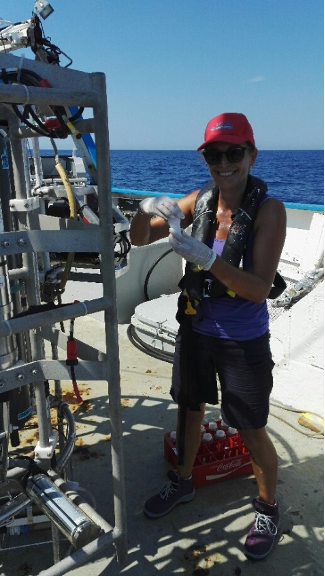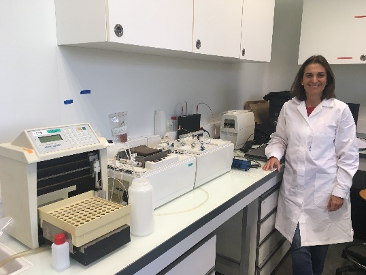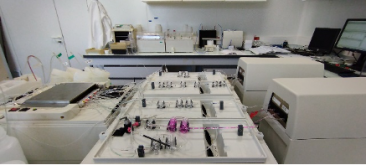Measuring nutrients
Sandra Nunige is an expert in the measurement of nutrient salts. Here she describes the various analyses she will be carrying out during the BioSWOT-Med cruise.

Sandra Nunige.
OCEANOGRAPHERS' INSTRUMENTS Sandra Nunige is a chemical engineer at the CNRS and works at the Institut Méditerranéen d'Océanologie (IMO) in Marseille. As part of the BioSWOT-Med campaign, she is responsible for measuring nutrient concentrations.
What are your research interests in the BioSWOT-Med campaign?
I'm involved in the BioSWOT-Med project to determine the nutrients that enable phytoplankton to grow in seawater. I'm particularly interested in this project because it will enable me to sample close to eddies and make the link with images obtained by the SWOT satellite.
The time of year corresponds to the spring phytoplankton bloom with low nutrient concentrations. It will be interesting to use the automated nanomolar phosphate measurement technique recently developed in the MIO laboratory.
You are responsible for measuring nutrients. What instruments do you use to measure them?
As a specialist in measuring nutrient salts, I'll be taking measurements of nitrate, nitrite, phosphate, silicate and ammonium, and determining the nitrogen and phosphorus content of particulate and dissolved organic matter.
Samples will be taken from CTD rosettes or by the pumping system, then analysed directly using an automatic analyser.
Samples will also be taken for more sensitive measurements of phosphates at nanomolar concentrations using the liquid waveguide capillary cell protocol.
More information






